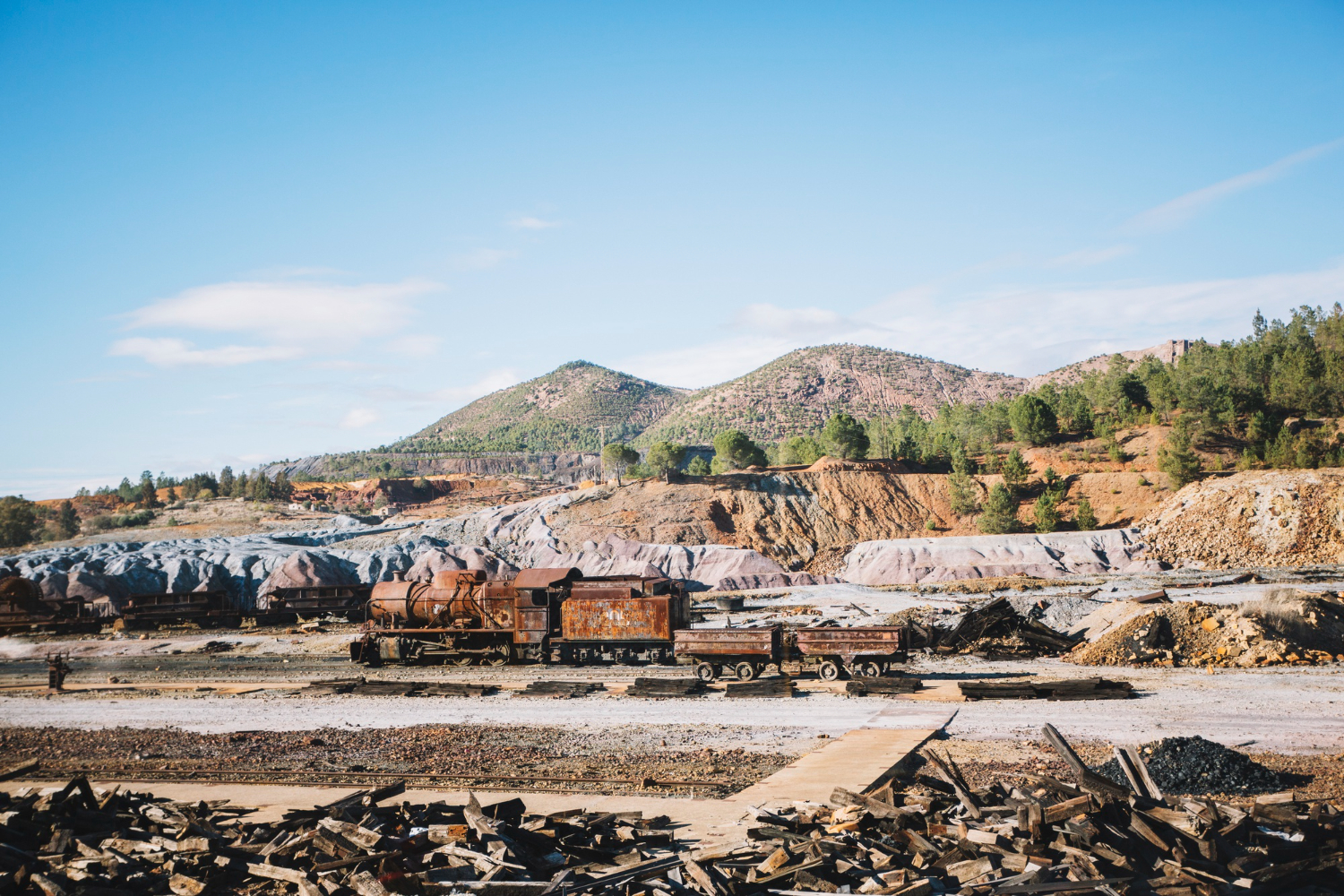Introduction:
Open-cast mining, or surface mining, provides access to valuable mineral resources that shape our modern world. From the coal that powers our cities to the metals that create our technology, this widespread practice is a pillar of economic development.
Yet, beneath the promise of progress lies a harsh reality. This form of mining ravages landscapes, poisons waterways, chokes the air, alters terrain, disrupts ecosystems, and leaves behind lasting environmental consequences.
What is open-cast mining?
Open-cast mining, or open-pit, open-cut, or surface mining, is a method of extracting minerals, rocks, or other resources from the ground when the deposits are relatively close to the Earth’s surface.
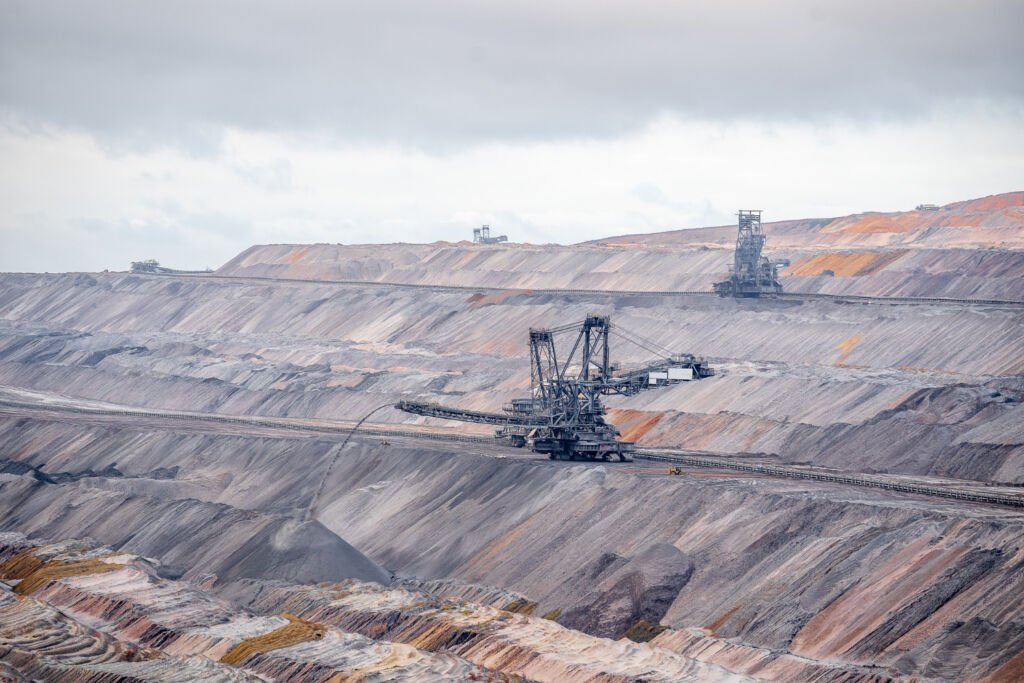
It is the most commonly applied mining method worldwide. It works by creating a vast, open pit instead of tunneling underground.
The Process of Open-cast Mining:
- Exploration and Planning: Geologists identify and map valuable mineral deposits near the surface. Teams create detailed mining plans considering environmental regulations and engineering requirements.
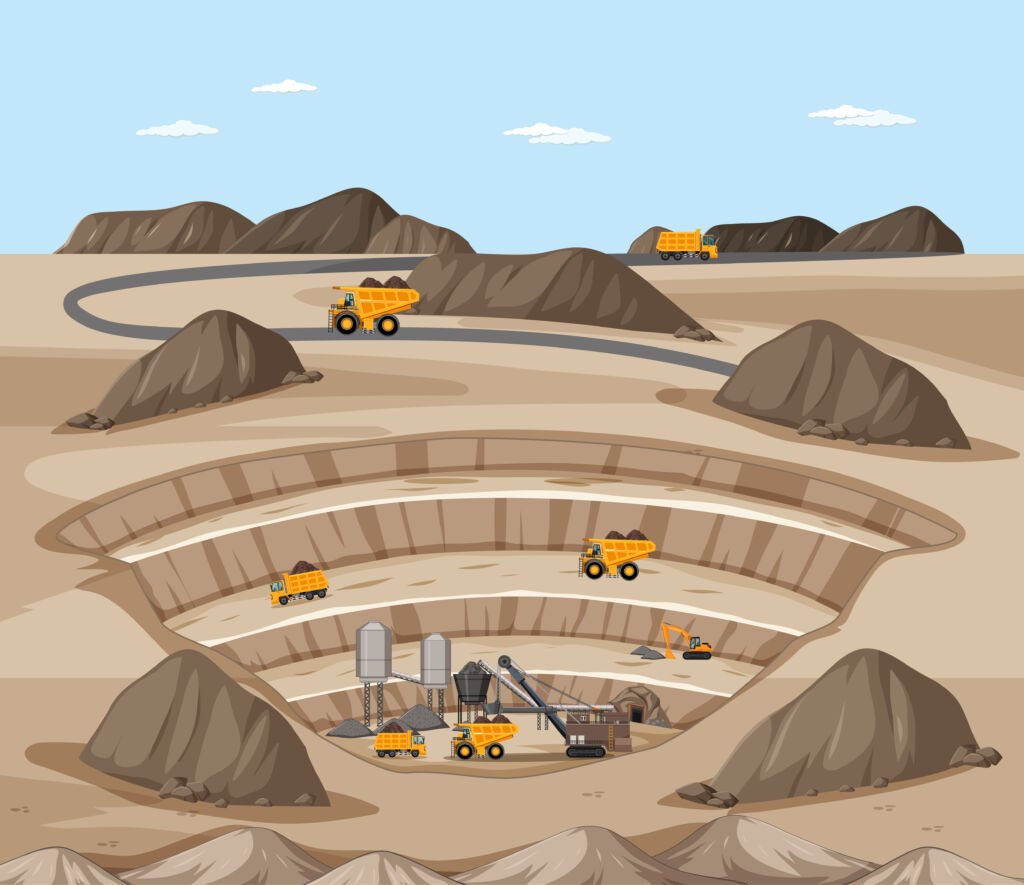
- Vegetation Removal and Overburden Removal: Trees, plants, and topsoil are cleared from the mining area. Then, layers of rock and soil overlying the mineral deposit (called “overburden”) are removed and often stored for later reclamation.
- Drilling and Blasting: Hard rock within the deposit is broken down using explosives placed in drilled holes.
- Mineral Extraction: Giant loaders and excavators scoop up the loosened ore and rocks and load them into haul trucks.
- Processing: The extracted ore is transported to facilities for crushing, separating valuable minerals, and waste disposal.
Advantages of Open-cast Mining:
- Usually less expensive than underground mining
- Safer for workers compared to underground methods
- Can extract large quantities of resources efficiently
- Low capital investment
- Heavy machinery can be used
- Engage small workforce
- Selective mining for certain ores
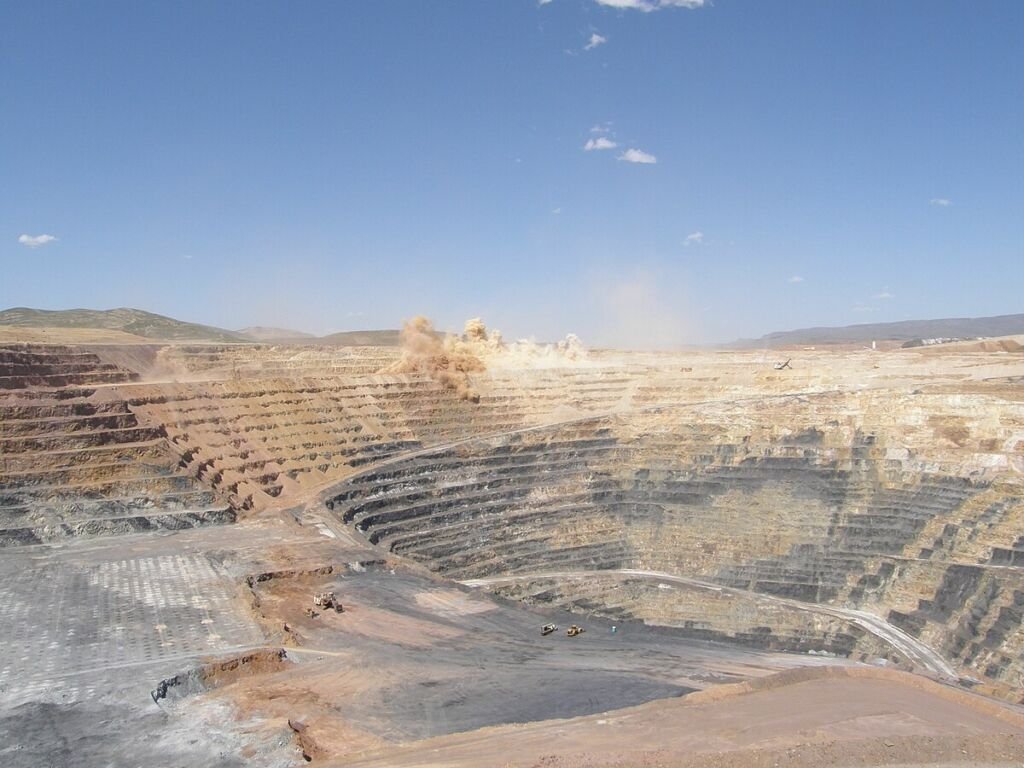
Effects of Open-cast Mining on the Environment:
1. Habitat Destruction and Biodiversity Loss:
Open-cast mining inflicts profound damage on natural habitats, pushing countless species towards the brink of extinction. The destructive cycle manifests in these key ways:
Deforestation and Land Clearing
- Vast areas of forests, grasslands, or other natural vegetation are removed to establish mines and build roads, housing, and other infrastructure.
- This direct habitat loss leaves animals without shelter, food sources, and breeding grounds.
- Trees and plants crucial for carbon storage and healthy ecosystems are permanently lost.
Destruction of Ecosystems
- Mining disrupts and often obliterates the complex relationships between plants, animals, and microorganisms that constitute healthy ecosystems.
- Animal migration routes are blocked or destroyed, restricting vital movement for feeding and reproduction.
- Natural predator-prey balances collapse, putting some species at uncontrolled risk while others face potential starvation.

Biodiversity Loss
- Plant and animal populations decline rapidly as habitats disappear or become less viable.
- This contributes to a dramatic loss in biodiversity, where a smaller variety of life can be supported within the affected area.
- Certain species may vanish entirely (become locally extinct) or even face global extinction if their habitat range is severely disrupted.
2. Land Degradation and Scarring:
Open-cast mining drastically alters the landscape, leaving scars that can persist for centuries. The damage involves several factors:
Soil Erosion: Increased vulnerability to wind and water erosion due to vegetation loss
- When trees and vegetation are removed, the soil becomes loose and unstable.
- Rain and wind easily strip away topsoil, removing vital nutrients and leaving the land barren.
- Erosion leads to dust storms, harming air quality and sediment deposition in waterways, choking river systems, and damaging aquatic life.
Formation of Waste Rock Dumps: Creation of enormous, unstable piles of leftover rock
- Open-cast mining produces vast amounts of waste rock – material unsuitable for extraction.
- These immense hills of rubble are prone to landslides and leaching of toxic substances.
- Waste rock dumps are often barren and difficult to revegetate, adding to the visual blight.
Landscape Change: Permanent, detrimental changes to the terrain’s natural aesthetics
- The original contours of the land are destroyed by the huge pits and the artificial hills formed by waste rock.
- The beauty of the natural environment is permanently compromised, disrupting both ecological functions and human connection to the landscape.
Loss of Topsoil: Topsoil is vital for nutrient cycling and vegetation growth. Stripping it away significantly restricts the potential for ecological restoration.
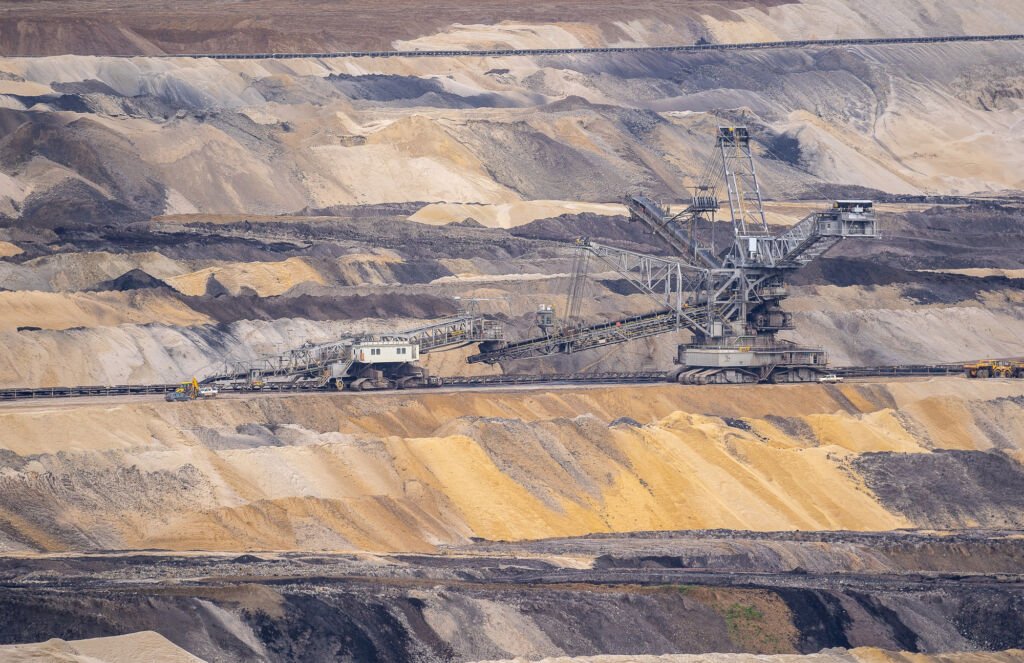
Acid Mine Drainage (AMD): Many waste rock dumps and open pits have exposed minerals reacting with water to form sulfuric acid, contaminating rivers and groundwater.
Limited Reclamation Success: While reclamation efforts are improving, many scarred landscapes have limited potential to ever return to a stable, fully functioning ecosystem.
3. Water Pollution:
Open-cast mining operations introduce multiple sources of severe water contamination, significantly harming aquatic ecosystems and the safety of water sources for human use.
Acid Mine Drainage (AMD)
- When sulfide minerals in unearthed rock are exposed to oxygen and water, they form sulfuric acid.
- This acid leaches out of waste rock piles and open pits, flowing into surrounding waterways.
- AMD drastically lowers the pH of water, creating an environment toxic to most aquatic life.
- Heavy metals such as lead, copper, and arsenic are also mobilized by the acid, adding to the contamination.
Sediment Runoff
- Stripped, loose soil is easily washed away by rain, filling rivers and lakes with sediment.
- This sediment chokes out aquatic plants and disrupts fish spawning grounds.
- Turbidity (cloudiness) of the water increases, blocking sunlight and harming aquatic life dependent on photosynthesis.
Chemical Contamination
- Many mining operations use cyanide, mercury, and other toxic chemicals to separate desired minerals from the ore.
- Accidental spills, leaks from holding ponds, or improper disposal of these chemicals can poison waterways.
- Direct ingestion of these chemicals is lethal to wildlife, and they can build up in the food chain, posing threats to human health.
4. Air Pollution:
Open-cast mining operations lead to significant deterioration of air quality through a combination of factors:
Dust Generation
- Clearing vegetation, blasting, crushing rocks, and moving enormous quantities of earth releases substantial quantities of particulate matter (PM) into the air.
- This dust contains tiny particles like PM10 and PM2.5, which can penetrate the lungs, causing respiratory problems, heart disease, and even cancer.
- Dust also reduces visibility, settles on vegetation, harms photosynthesis, and contributes to poor air quality for nearby communities.
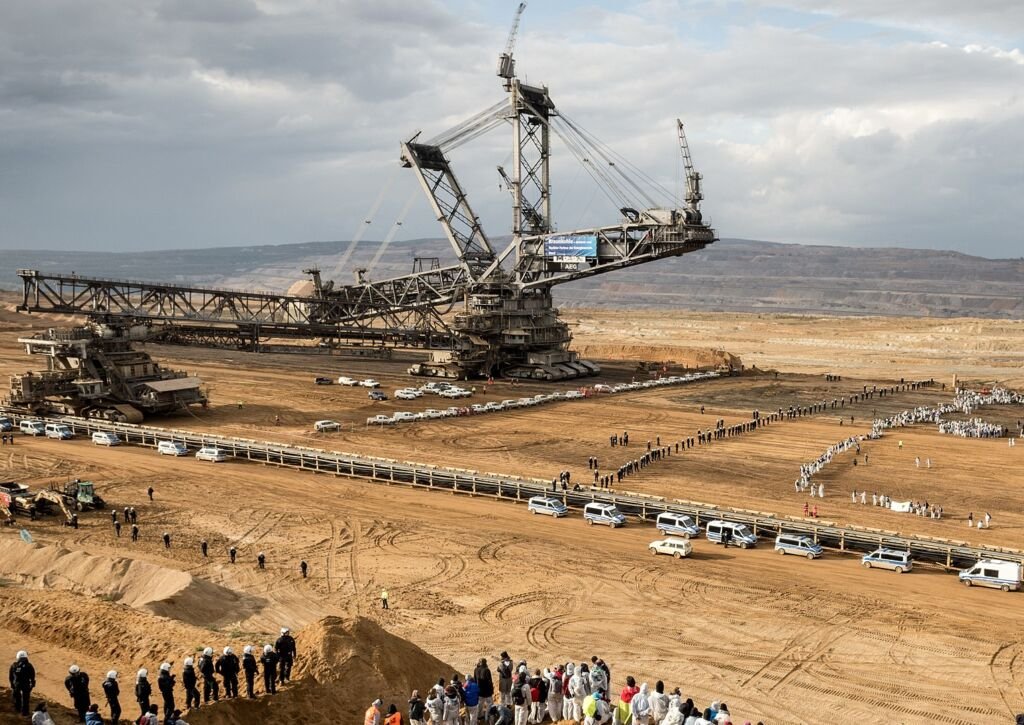
Greenhouse Gas Emissions
- Heavy machinery used in mining (excavators, haul trucks) burns fossil fuels, releasing carbon dioxide (CO2) – a significant greenhouse gas contributing to climate change.
- Open-cast coal mines and some other mineral deposits can release trapped methane (CH4), another potent greenhouse gas.
5. Noise Pollution:
- Blasting to break up rock generates loud shockwaves, which can startle and disturb wildlife, affecting migration and breeding patterns.
- Constant noise from heavy machinery can interfere with animal communication and lead to stress and displacement within wildlife populations.
- Noise pollution also significantly disrupts the quality of life for communities near open-cast mines.
6. Impacts on Human Communities:
Open-cast mines not only damage the environment but also significantly disrupt and harm the lives of people living in proximity. The key issues include –
Direct Health Hazards
- Respiratory Problems: High levels of mining-generated dust increase the risk of asthma, bronchitis, lung cancer, and other respiratory diseases.
- Skin Conditions: Direct contact with contaminated water or soil can lead to skin infections and rashes.
- Waterborne Diseases: Polluted water supplies increase the prevalence of waterborne illnesses like cholera, dysentery, and typhoid fever.
Displacement and Resettlement
- Loss of Agricultural Land: Mines often occupy large areas, displacing people from their farming lands and severing their source of food and income.
- Loss of Traditional Livelihoods: Communities dependent on natural resources like forests and rivers for their livelihoods are forced to abandon their traditional ways of life.
- Inadequate Resettlement: Even when compensation and resettlement are offered, they are often insufficient or mismanaged, leaving displaced people impoverished and marginalized.
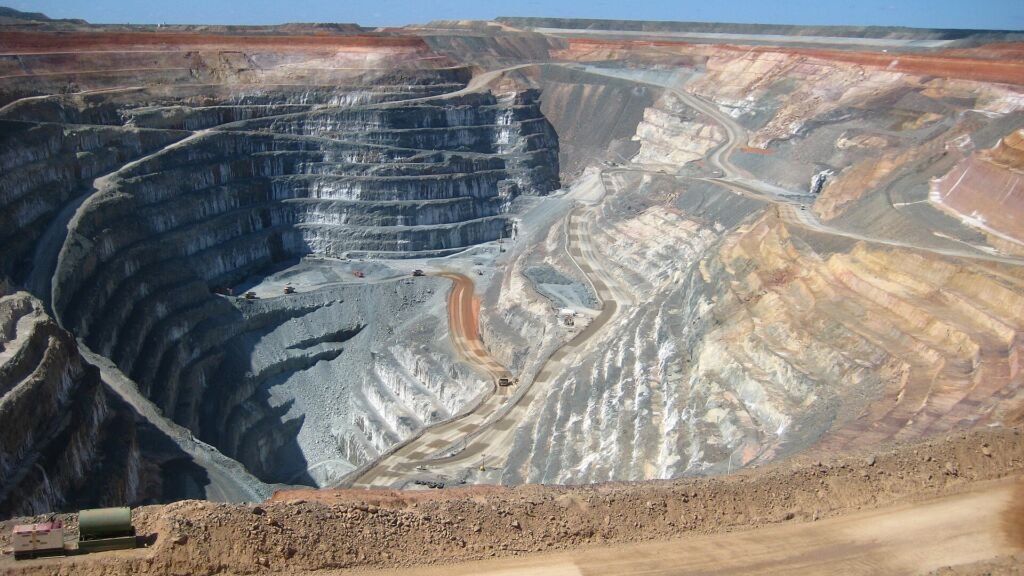
Social Disruption:
- The influx of Mine Workers: New mining projects frequently attract many migrant workers, straining local services and potentially triggering social tensions.
- Increased Vulnerability to Exploitation: Communities may experience increases in crime, human trafficking, and abuse, especially of women and children, during mine establishment.
- Disruption of Culture and Community Fabric: Displacement and social strain can erode community bonds and weaken traditional cultural practices.
7. Other Effects:
- The impacts of open-cast mining disproportionately harm poor communities with limited resources to fight back or demand better practices.
- Mining companies often make promises of jobs and development that go unfulfilled, leaving communities worse off in the long term.
- Mining companies need stricter regulations and greater accountability to protect the health, well-being, and future of communities impacted by their operations.
Mitigation and Reclamation Strategies:
While open-cast mining inevitably causes environmental disruption, careful planning and proactive measures can minimize negative impacts and facilitate better post-mining land use. Key strategies include –
1. Progressive Remediation:
- Initiating restoration efforts in sections of the mine as soon as they are finished with active mining.
- This includes backfilling pits, re-contouring land, revegetating disturbed areas, and treating contaminated water.
- Progressive remediation reduces exposed, degraded land and can accelerate mine closure processes.
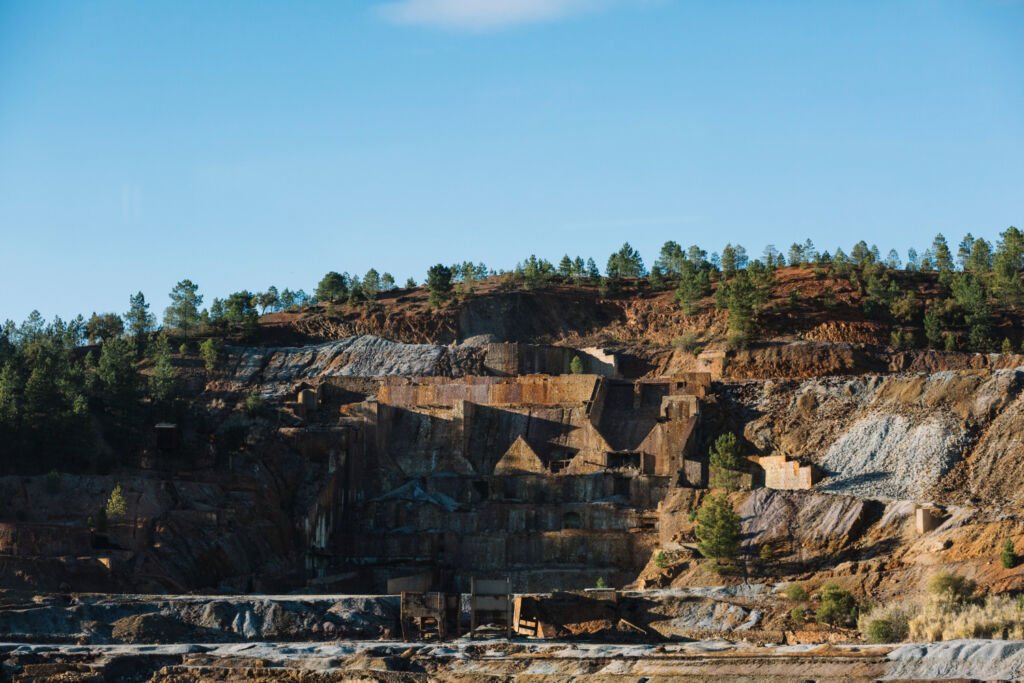
2. Responsible Mine Closure Planning:
- Developing detailed plans for mine closure should begin far in advance, addressing environmental and social aspects.
- Plans should ensure the site is stable, safe, and free from long-term pollution risks.
- Post-mining land use needs to be considered, whether it’s agriculture, reforestation, wildlife habitat, or renewable energy projects.
- Stakeholder engagement with affected communities is vital for designing and implementing successful mine closure plans.
3. Sustainable Mining Practices:
- Exploring alternative mining methods with a lower environmental footprint, where feasible (though these may also have cost/resource drawbacks).
- Implement responsible waste disposal practices, focusing on minimizing acid mine drainage and toxic runoff.
- Employing technologies for dust suppression and reducing air pollution to mitigate health impacts.
- Investing in renewable energy sources to lower greenhouse gas emissions for mine operations.
4. Regulation and Enforcement:
- Strong government regulations on all aspects of open-cast mining, including environmental impact assessments, mine closure, and land reclamation.
- Ensuring adequate financial resources (often in the form of bonds posted by mining companies) to ensure reclamation happens even if a company abandons its site.
- Robust monitoring and enforcement mechanisms to hold mining companies accountable for violating environmental standards.
- Transparent communication and engagement with local communities on monitoring and mitigation activities.

5. Other Methods:
- Integrating biodiversity conservation into closure plans, such as creating wildlife corridors and promoting native plant recovery.
- Promoting alternative economic opportunities for communities that rely on mining to lessen their dependence on a single industry.
- Collaboration between mining companies, researchers, and environmental organizations to continually improve sustainable mining practices.
Conclusion:
Pursuing vital mineral resources should not come at the planet’s and its inhabitants’ expense. Open-cast mining operations tear vast scars into the earth, damaging ecosystems, communities, and the planet.
Moving forward, a shift is needed to prioritize balance. Responsible mining practices, strict regulations, and a commitment to reclamation are imperative to minimize long-term harm. Our choices today will determine our ecosystems’ health and communities’ well-being for generations.

